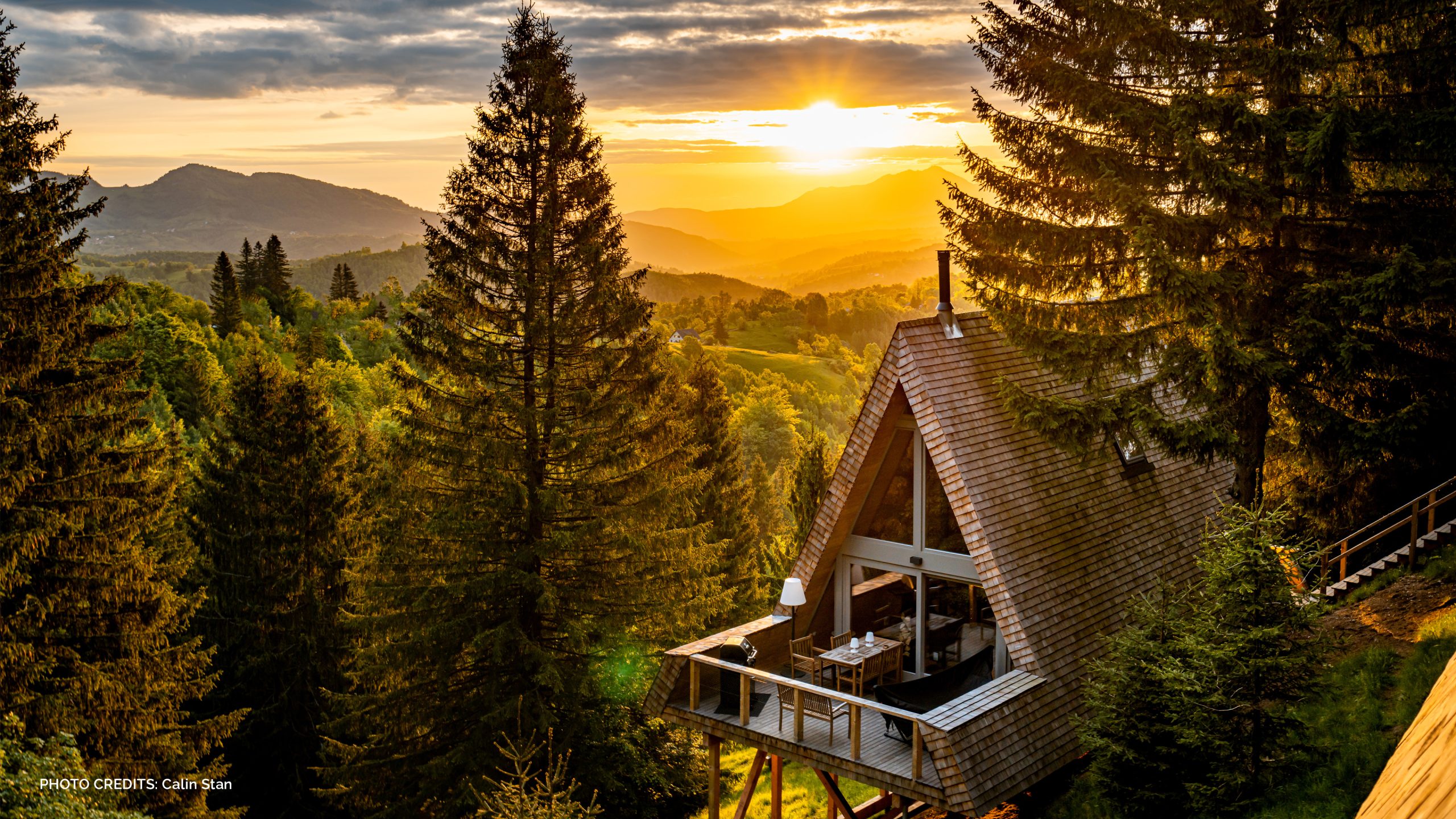The site is located within the built-up area of the “tourist village” Șirnea, Fundata Municipality, Brașov County, far from the village center, on a northern mountain slope, in a wooded area, near a spring that gives rise to a stream. Access is via a narrow, dead-end stone road that serves a few scattered houses in the area. It is precisely this isolation of the property that led the beneficiary, a native of the village, to desire to build a weekend and vacation home for himself in the form of a small cabin, similar to the small annexes of mountain houses. The shape, type of structure, and materials used were carefully chosen to meet the client’s requirements, the cultural and natural context, and the local traditional specifics. The extensive use of wood can be noted, from the structure, roofing, horizontal cladding and walls, to the furniture and even the bathroom fixtures. Finally, due to the numerous accommodation requests after the construction of the first cabin, four identical cabins were built, discreetly inserted on the property, to take advantage of the potential offered by the natural mountain setting, with steep slopes, fir forests, and impressive panoramic views.

